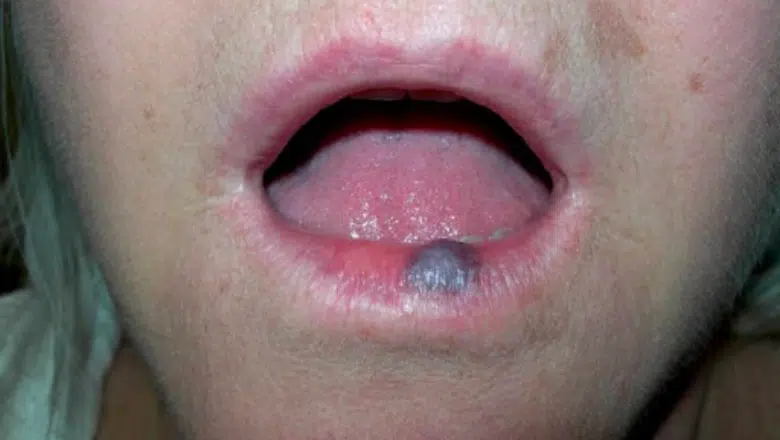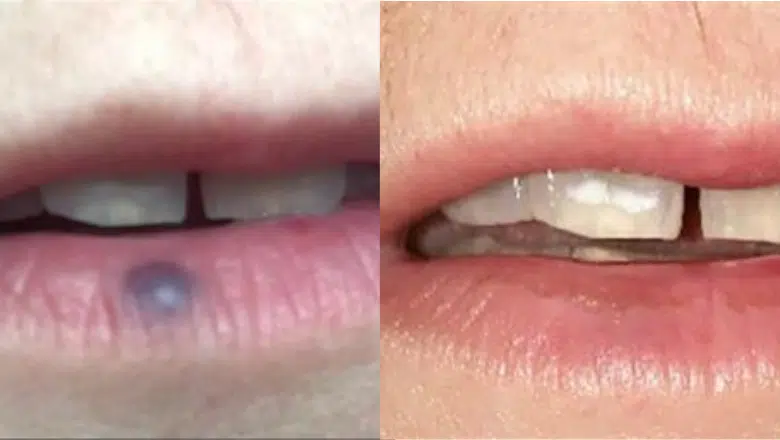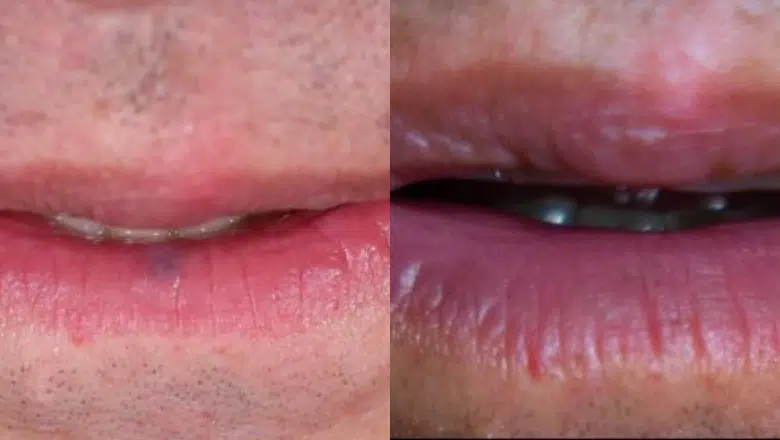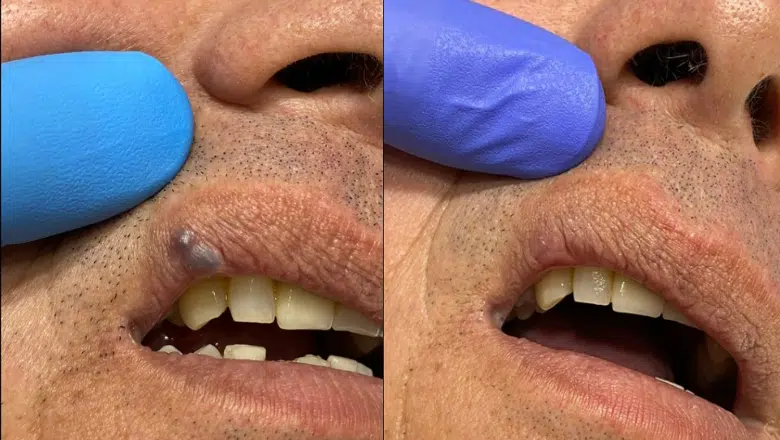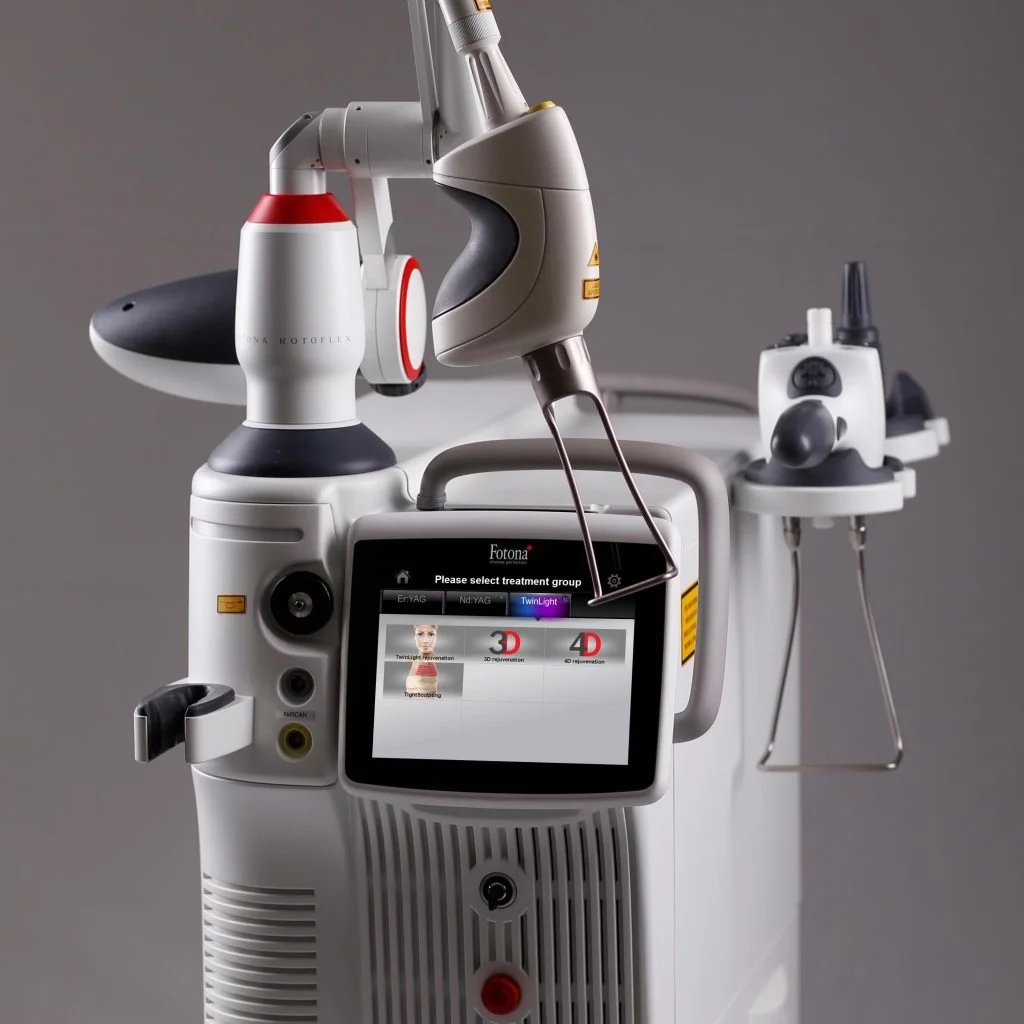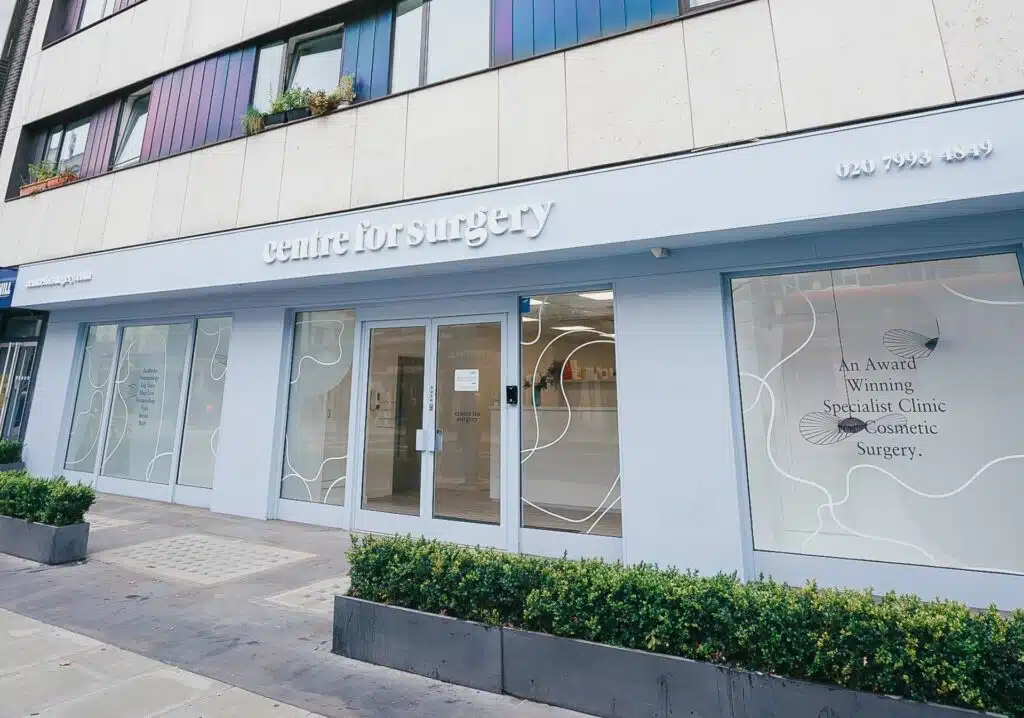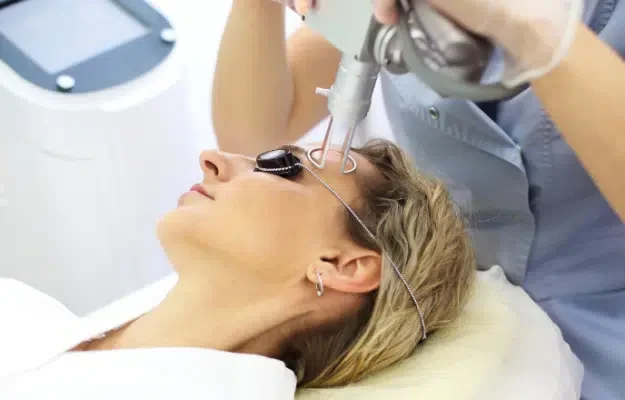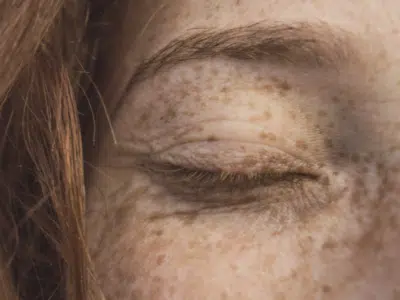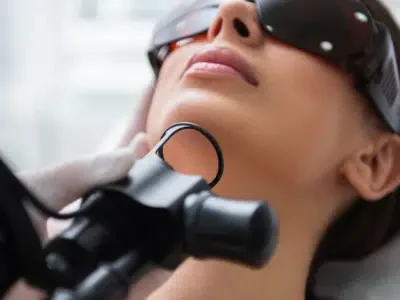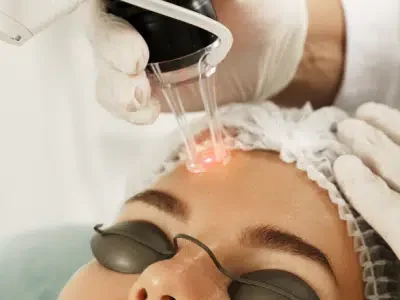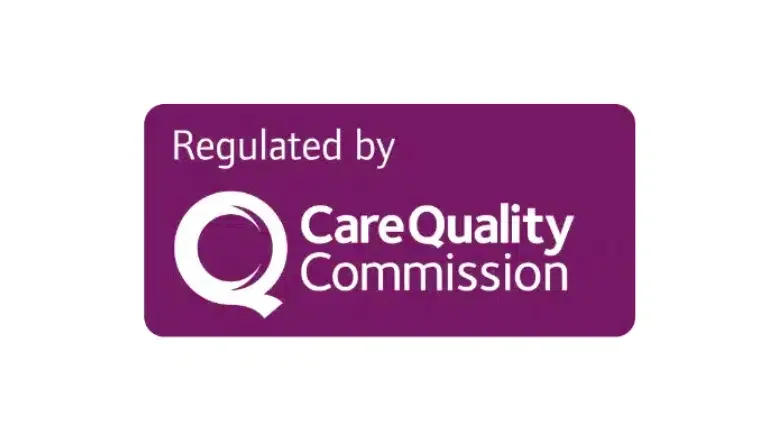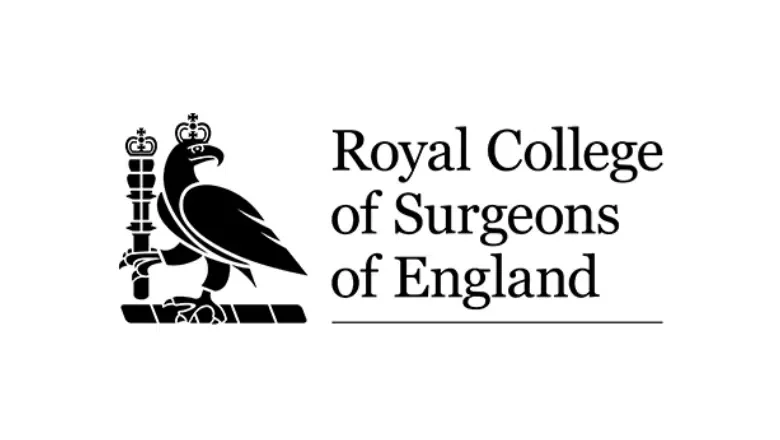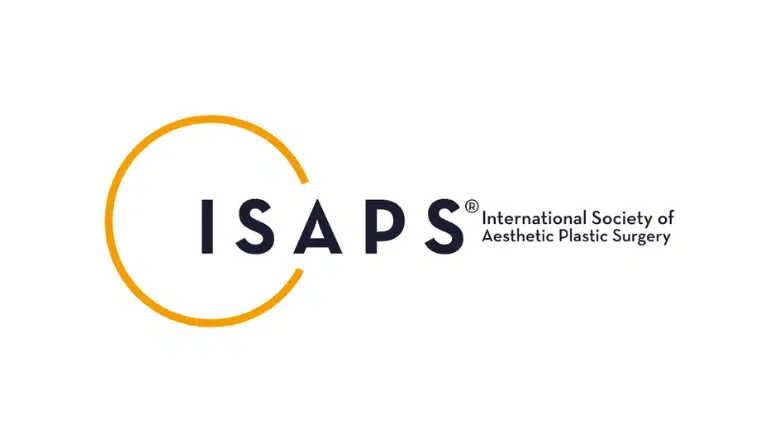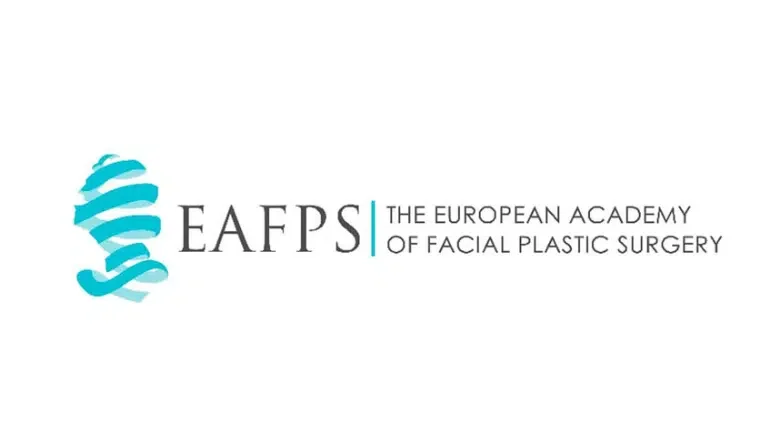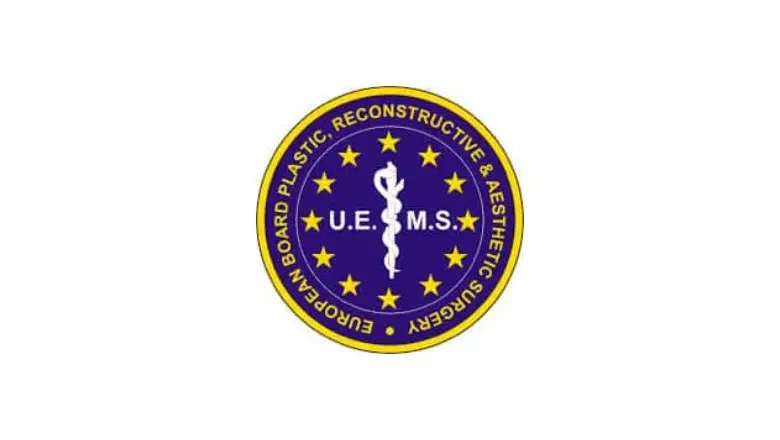Laser Venous Lake Removal London UK
Lip Venous Lake Removal Using Laser
Venous lakes are small veins located in the skin that become larger and more visible with time. Venous lakes are much more common in older age groups and are more often seen in men than women. They are most commonly on the lower lip and are vascular in origin. The causes of venous lake formation are not entirely understood. Venous lakes are completely benign lesions and are not infectious. This means they cannot be spread from person to person. Venous lakes are seldom a source of problems. However, discomfort may be felt if they are knocked or caught in clothing. Occasionally, venous lakes can start to bleed with no clear underlying cause.
What are Venous Lakes?
Venous lakes are benign vascular lesions that appear most frequently in older adults. They are primarily found on sun-exposed areas of the body, such as the lips, ears, and face. These lesions are formed due to the dilation of venules, a type of small vein.
Due to the presence of deoxygenated blood, venous lakes are dark blue or purple in appearance. They are typically small, often not exceeding a few millimetres in diameter, and have a soft, compressible texture. When pressed, they may temporarily lose their colour, a characteristic known as diascopy.
The primary cause of venous lakes is chronic sun exposure, which damages the skin and leads to the dilation of blood vessels. They are more common in individuals with fair skin and those who have had significant sun exposure over their lifetime.
While venous lakes are generally harmless and do not cause any symptoms, they can sometimes be a cosmetic concern. If treatment is desired for aesthetic reasons, options include laser therapy, cryotherapy, or surgical excision. It’s important to have any new or changing skin lesions evaluated by a healthcare professional to rule out more serious conditions.
Preventive measures primarily involve protecting the skin from excessive sun exposure. This includes using sunscreen, wearing protective clothing, and avoiding the sun during peak hours. Regular skin checks are also recommended, especially for those with a history of extensive sun exposure, to monitor for any changes in existing skin lesions or the development of new ones.
Venous lake treatment before and after
Case 1:
Case 2:
Case 3:
This is a 65-year-old male with a venous lake located on the upper lip. No skin preparation was required. The procedure is performed under topical anaesthesia, which is applied 30 minutes beforehand. Ice is placed over the lesion ten minutes before starting the process to minimise bleeding. Just one pass of the laser is enough to eliminate the venous lake. Cold air cooling is used during treatment.
Benefits of Laser Venous Lake Removal with Fotona Laser
Laser venous lake removal is a popular and effective method for treating venous lakes, particularly on visible areas like the face and lips. This procedure offers several benefits:
Minimally Invasive and Safe
Laser treatments are minimally invasive compared to traditional surgical methods. The risk of infection and complications is significantly lower, making it a safer option for many patients.
High Efficacy
Lasers are highly effective in removing venous lakes. They work by delivering intense light to the targeted lesion, which is absorbed by the blood vessels causing them to collapse and eventually be reabsorbed by the body.
Quick Procedure with Immediate Results
The treatment is relatively quick, often completed in just one session, and patients can see immediate results. The rapid recovery time allows individuals to return to their daily activities almost immediately.
Minimal Discomfort and Scarring
Laser treatments cause minimal discomfort compared to other removal methods. Most patients report only a mild stinging sensation. Additionally, lasers minimize the risk of scarring, which is a significant advantage, especially for treatments on the face.
Improved Cosmetic Appearance
For those who are self-conscious about the appearance of venous lakes, laser removal can significantly enhance cosmetic appearance. This boost in confidence is a key benefit for many individuals.
Precision
Lasers offer a high degree of precision, allowing healthcare professionals to target the venous lake without affecting the surrounding skin. This precision is particularly important for lesions located in sensitive areas.
Low Risk of Recurrence
Once a venous lake is treated with laser therapy, the risk of recurrence in the same area is low. This long-term resolution is a significant benefit for patients seeking a permanent solution.
Customisable Treatment
Laser settings can be adjusted according to the size, depth, and location of the venous lake, allowing for a tailored approach to each individual case.
Venous Lake Laser Treatment
The optimal treatment for treating venous lakes involves using a long pulse Nd:YAG laser. A pulsed dye laser is an alternative but less effective option as it is only suitable for much smaller and superficial venous lakes. The laser treatment with Nd:YAG laser is rapid and straightforward. There is no need for topical application of local anaesthetic cream. The skin is pre-cooled with an ice cube for 5 seconds to relieve any discomfort from the laser pulse and prevent excessive thermal damage. Skin cooling with cold air is applied, and the first laser pulse leads to moderate shrinkage and greyish discolouration of the venous lake. This appearance is due to coagulation and swelling of the blood vessels caused by the deep penetration of the Nd:YAG laser. For most lesions, one treatment is all that is required. For larger lesions, occasionally, more than one treatment is needed. After the procedure, a suitable protective ointment is applied several times daily to facilitate healing.
Potential risks of venous lake treatment
With larger lesions, it may occasionally have a residual flat and lighter-coloured mark where the venous lake originally was. This appearance is much less prominent compared with the original lesion and, therefore, more cosmetically acceptable. Rare complications include the risk of skin necrosis, scarring or ulceration. This usually occurs from inadequate cooling before laser treatment or inappropriately high laser settings. These risks are reduced even further when venous lake treatment is undertaken by an aesthetic practitioner skilled in the laser treatment of facial vascular lesions.
Venous Lake Removal in London: Discover Excellence at Centre for Surgery
Why Choose Centre for Surgery for Venous Lake Removal?
Centre for Surgery in London stands as a beacon of excellence in cosmetic surgery, particularly renowned for its expertise in venous lake removal. Our clinic, located in the heart of London on Baker Street, offers a combination of state-of-the-art technology and a team of highly skilled professionals dedicated to delivering outstanding results.
Patient Testimonials:
- James from Chelsea: “The level of care and expertise at Centre for Surgery is unparalleled. My venous lake treatment was smooth, and the results were beyond my expectations. The staff’s professionalism and kindness made the entire process comfortable.”
- Sarah from Hampstead: “Choosing Centre for Surgery for my venous lake removal was the best decision I made. The procedure was quick, painless, and effective. The team was supportive throughout my journey, and I am thrilled with the outcome.”
- Ava from Kensington: “The attention to detail and patient care at Centre for Surgery is exceptional. My experience from consultation to post-treatment was flawless. The results are amazing, and I couldn’t be happier.”
Booking a Consultation:
Ready to embark on your journey towards flawless skin? Book a consultation with our specialists today. Contact us at:
- Phone: 0207 993 4849
- Email: contact@centreforsurgery.com
- Address: 95-97 Baker Street, London W1U 6RN
For more information, visit our About Us page.
Finance Options:
Understanding the financial aspects of cosmetic surgery, we offer flexible finance options, including 0% APR with Chrysalis Finance, to make your treatment journey smooth and stress-free. Learn more about our finance options.
Explore More at Our Plastic Surgery Blog:
Gain deeper insights into venous lake removal and other cosmetic procedures by visiting our comprehensive plastic surgery blog.
Frequently Asked Questions:
Have questions? Our Clinic FAQs provide detailed answers to common queries, ensuring you are well-informed every step of the way.
Baker Street Clinic:
Experience world-class treatment in a serene and sophisticated environment at our Baker Street clinic. Our central London location ensures accessibility and convenience for all our patients.
Choose Centre for Surgery for your venous lake removal in London – where expertise, care, and exceptional results come together.
FAQs
-
What do venous lakes look like?A venous lake has an appearance resembling a small bluish lump with a soft consistency and can be up to 1 cm wide. Venous lakes may either be completely flat or be raised from the surrounding skin. Venous lakes are most commonly found in areas of chronic sun exposure, most commonly the lower lip or the rim of the ear. When finger pressure is applied to a venous lake, the blood inside the venous lake will be forced outwards, which causes the venous lake to flatten and even almost disappear. Once the pressure is released, the venous lake will return to its original appearance. The photo above represents the typical appearance of a venous lake.
-
What is Laser Venous Lake Removal?Laser venous lake removal is a medical procedure that uses focused laser light to treat venous lakes, which are dark blue or purple lesions commonly found on the lips, ears, and face.
-
How does the procedure work?The procedure involves directing intense laser light onto the venous lake. The energy from the laser is absorbed by the blood vessels, causing them to collapse and eventually be absorbed by the body.
-
Is laser removal safe?Yes, laser removal is generally safe when performed by a specialist laser practitioner. It is a minimally invasive procedure with a low risk of complications.
-
Does venous lake removal hurt?Patients may experience mild discomfort, often described as a stinging sensation. However, pain is typically minimal, and some clinicians may use a local anesthetic to reduce discomfort.
-
How long does a session take?The duration of a session varies but is usually quick, often completed within minutes depending on the size and number of venous lakes being treated.
-
Are there any side effects?Common side effects include temporary redness, swelling, and minor bruising. Serious side effects are rare, especially when the procedure is performed by an experienced professional.
-
How many treatments will I need?Many venous lakes can be effectively treated with a single laser session, but some may require multiple treatments, depending on their size and depth.
-
Will the venous lake return after treatment?The recurrence of venous lakes in the same area after laser treatment is uncommon, making it a reliable long-term solution.


